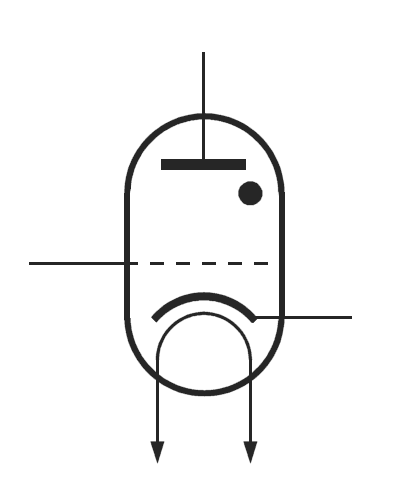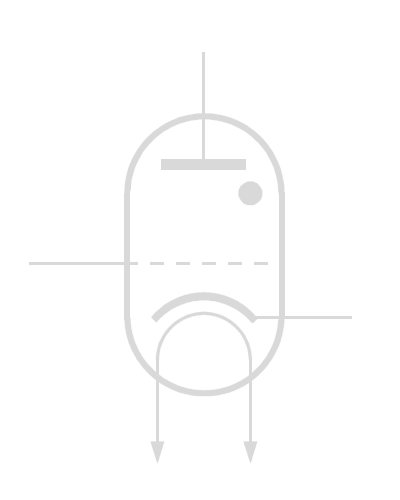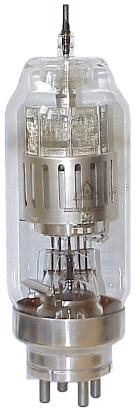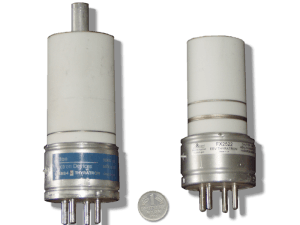Thyratron

indicates
the gas filling
Figure 1: the thyratrons symbol

indicates
the gas filling
Figure 1: the thyratrons symbol
Thyratron

Figure 2: Thyratron
TGi-700_25

Figure 2: Thyratron
TGi-700_25
A typical thyratron is a gas-filled tube for radar modulators. The function of the high-vacuum tube modulator is to act as a switch to turn a pulse ON and OFF at the transmitter in response to a control signal.
The grid has complete control over the initiation of cathode emission for a wide range of voltages. The anode is completely shielded from the cathode by the grid. Thus, effective grid action results in very smooth firing over a wide range of anode voltages and repetition frequencies. Unlike most other thyratrons, the positive grid-control characteristic ensures stable operation. In addition, de-ionization time is reduced by using the hydrogen-filled tube.

Figure 3: Thyratrons with a shell of ceramic
A trigger pulse ionize the gas between the anode and the cathode. Only by removing the high voltage or reducing it under this level where the electrons do not have enough energy to produce the gas-ionization then the anode current will stop. Only if the production of these positive ions is stopped then the grid is be able to regain control. Because of the very high anode voltage the anode is attached on the upper end of the glass bulb mostly. Therefore the tube looks very ancient. By the ionized gas a thyratron shines in the ionized condition like a glow lamp.
Thyratrons could be a source of X-rays by using of extremely high anode voltage. This X-ray interference is often seen as causes of subsequent cancers of radar soldiers who were exposed of this radiation unprotected. In modern radars thyratrons are no longer used. Their function is completely replaced by semiconductor devices such as thyristors or triacs.
